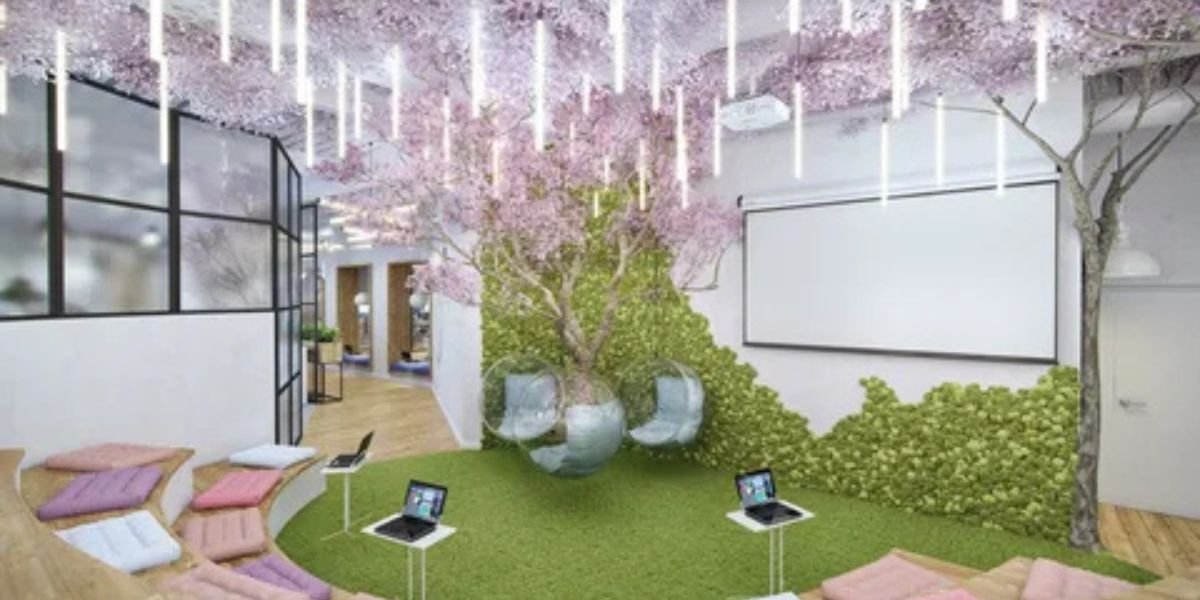The lobby design is a prime example of the saying, “First impressions last.” The lobby establishes the tone for the entire establishment, communicating its brand, aesthetics, and the importance it holds for both visitors and occupants. With careful consideration of elements like furniture, lighting, color, decor, and cleanliness, any lobby can become a testament to hospitality and style. Keep reading to discover how each component contributes to the allure of these welcoming environments.
The Role of Furniture in Creating a Welcoming Lobby Atmosphere
Choosing the right furniture is crucial for creating a welcoming lobby. Comfortable seating encourages visitors to relax, while the layout should balance social interaction and privacy to suit different needs. The style and materials of the furniture also reflect the brand’s identity, whether it’s luxurious, modern, or practical, and help set the tone for the space.
Durability matters too, since lobby furniture must handle heavy daily use without losing its appeal. Trusted suppliers like OFS Corp provide high-quality pieces that last, making them a smart investment. Thoughtful furniture arrangement can improve traffic flow, guiding visitors smoothly to reception, elevators, or other key areas.
Selecting the Right Color Palette for Your Lobby Space
Color plays a vital role in shaping the mood and feel of a lobby. Using earth tones and neutrals can create a calm, welcoming atmosphere, while bold colors add energy and make a strong statement. Choosing the right palette should reflect the brand’s personality and appeal to its visitors. Light colors can open up smaller spaces, making them feel larger, whereas darker tones add depth and elegance to bigger areas. It’s also important to think about how colors change with natural and artificial light throughout the day.
Accents in the color scheme help draw attention to key features like the reception desk or architectural details. For instance, a splash of vibrant color against a neutral background can guide the eye and add visual interest. Incorporating elements like artificial red roses can enhance this effect. Maintaining color consistency throughout the building, from walls to floors and décor, creates a seamless and harmonious experience for guests as they move through the space.
Incorporating Lighting Design for Mood and Functionality in Lobbies
Proper lighting in a lobby is crucial for both functionality and mood setting. Ambient lighting creates a warm atmosphere, while task lighting is essential for areas like reception desks. The style of light fixtures also influences the lobby’s character, with grand chandeliers in luxury hotels and sleek, modern fixtures in contemporary offices.
Control systems allow for adjustments throughout the day, such as using dimmers for a cozier atmosphere in the evening or brighter lights during business hours. Natural light, such as large windows capturing daylight, can also invigorate the lobby space and provide a calming view of the outdoors, benefiting both visitors and staff.
Adding a Personal Touch with Art and Decorative Elements
Artwork and decorative elements can infuse personality and culture into a lobby, transforming it into a memorable and distinctive space. Simple additions like plants or a statement rug can enrich the environment and add texture and color. The choice of decor should be deliberate, complementing the furniture and color palette.
Interactive elements like digital art displays and informational kiosks can enhance the user experience. Scale is important when incorporating art and decorative items, with large pieces anchoring the room and smaller accents curated to avoid clutter.
Importance of Maintaining a Clean and Clutter-Free Lobby
Maintaining a clean lobby is crucial for building trust and respect among visitors. Regular cleaning reflects professionalism and ensures a healthy environment free from dust and allergens. Regular maintenance of furniture, fixtures, and decor prevents wear and maintains a new appearance. Scheduling routine maintenance checks can address issues promptly, avoiding negative impressions.
Clutter can accumulate in high-traffic areas, detracting from the lobby’s welcoming nature. Efficient organization and storage solutions, along with clear signage, can keep the space tidy. An uncluttered lobby is not only aesthetically pleasing but also safer and easier to navigate. Including elements that reduce clutter, such as trash receptacles, brochure holders, and coat racks, can help maintain a neat appearance.
Altogether, a well-designed lobby is a symphony of elements—furniture, lighting, color, decor, and cleanliness—that come together to create a space that is not just a transition area, but a destination in its own right. It is the gateway through which all other experiences in a building are accessed, and as such, deserves thoughtful consideration and investment.
















